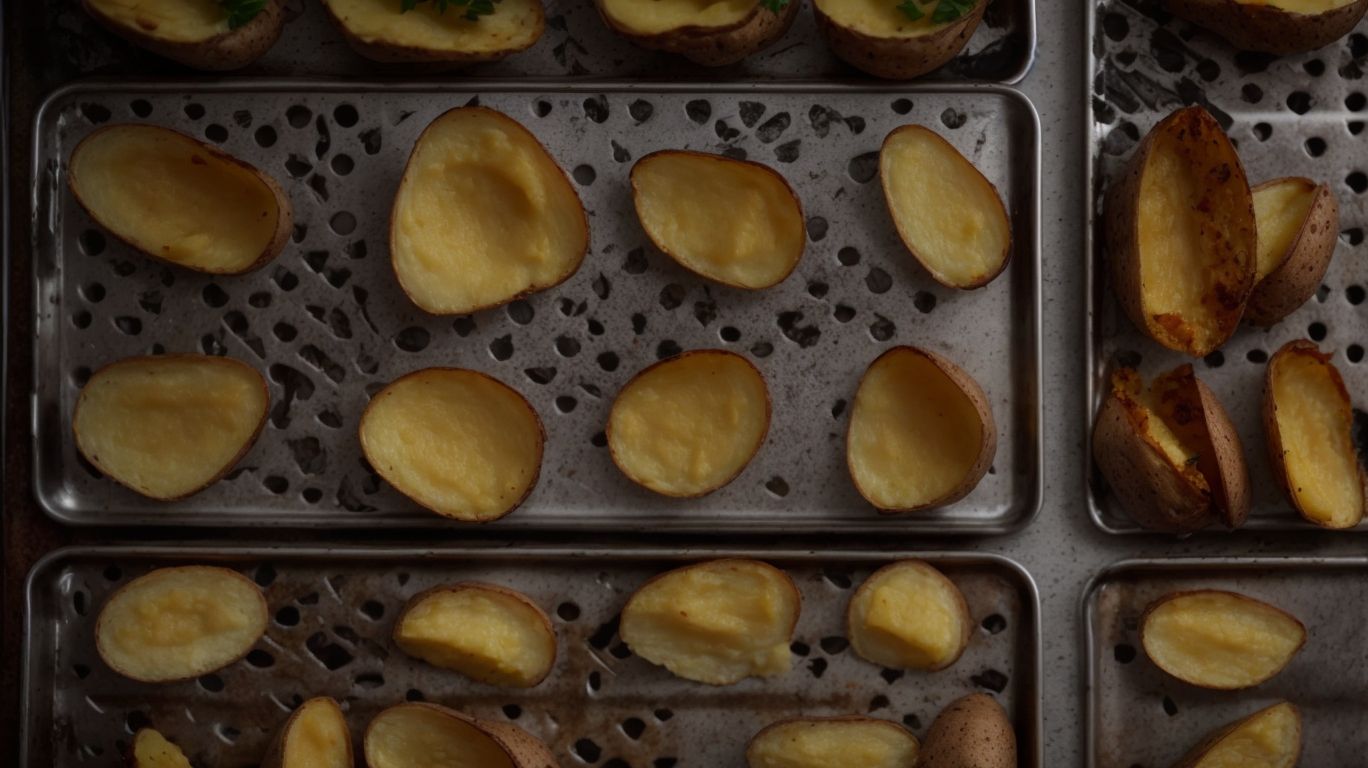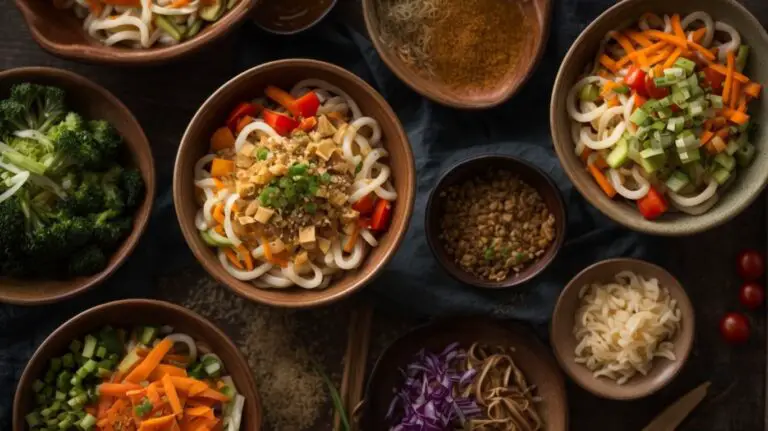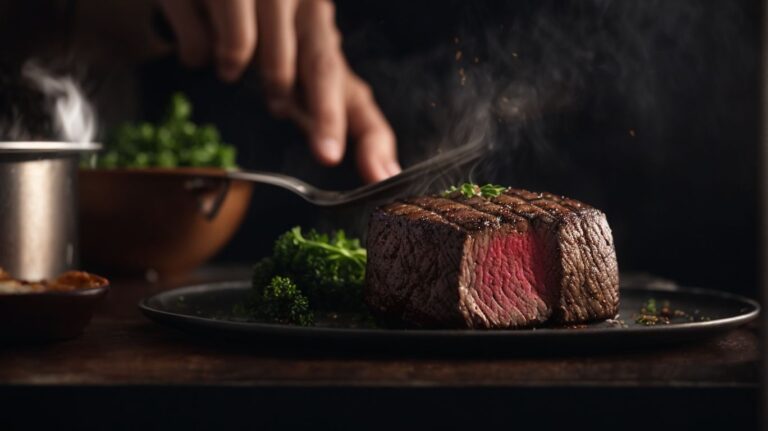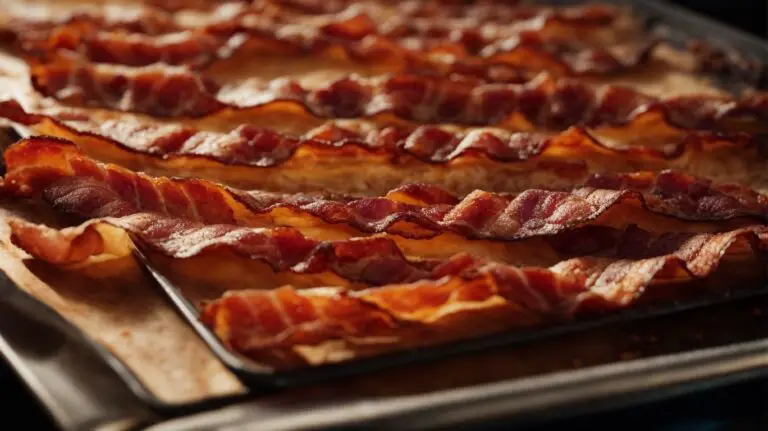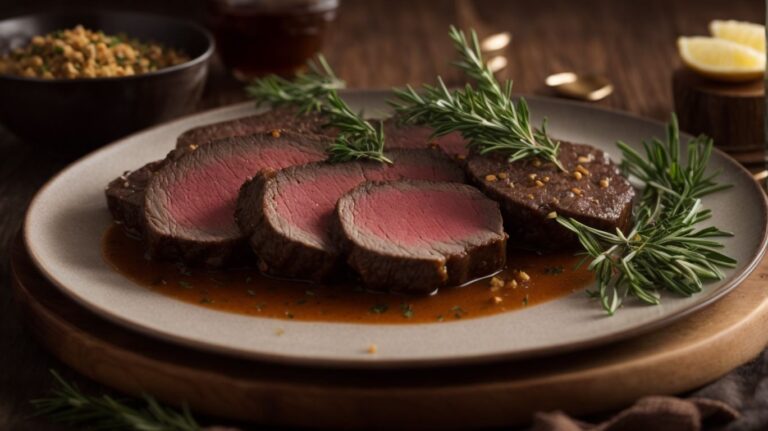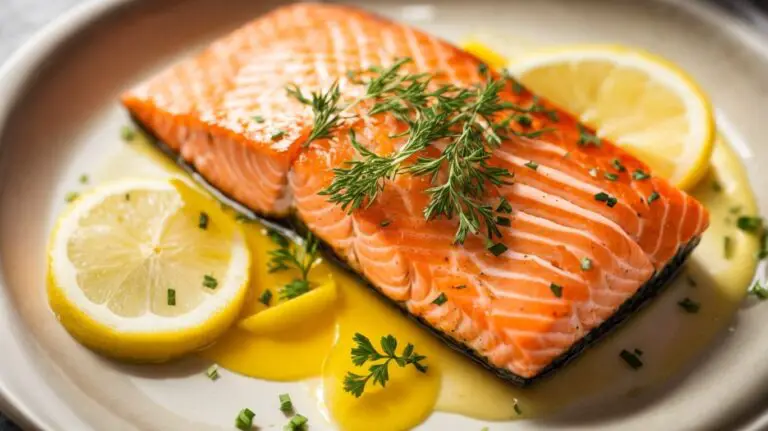How to Cook Potato Skins After Peeling?
Are you tired of throwing away potato skins after peeling?
In my latest article on Poormet.com, I explore the benefits of cooking potato skins and provide various methods to do so.
From reducing food waste to adding extra flavor and nutrients, there are plenty of reasons to give this underrated ingredient a second chance.
Whether you prefer baking, frying, grilling, or microwaving, there are endless possibilities to enhance the flavor of potato skins with ingredients like herbs, cheese, bacon, and sour cream.
Stay tuned for tips on how to cook the perfect potato skins every time!
Key Takeaways:
Why Should You Cook Potato Skins After Peeling?
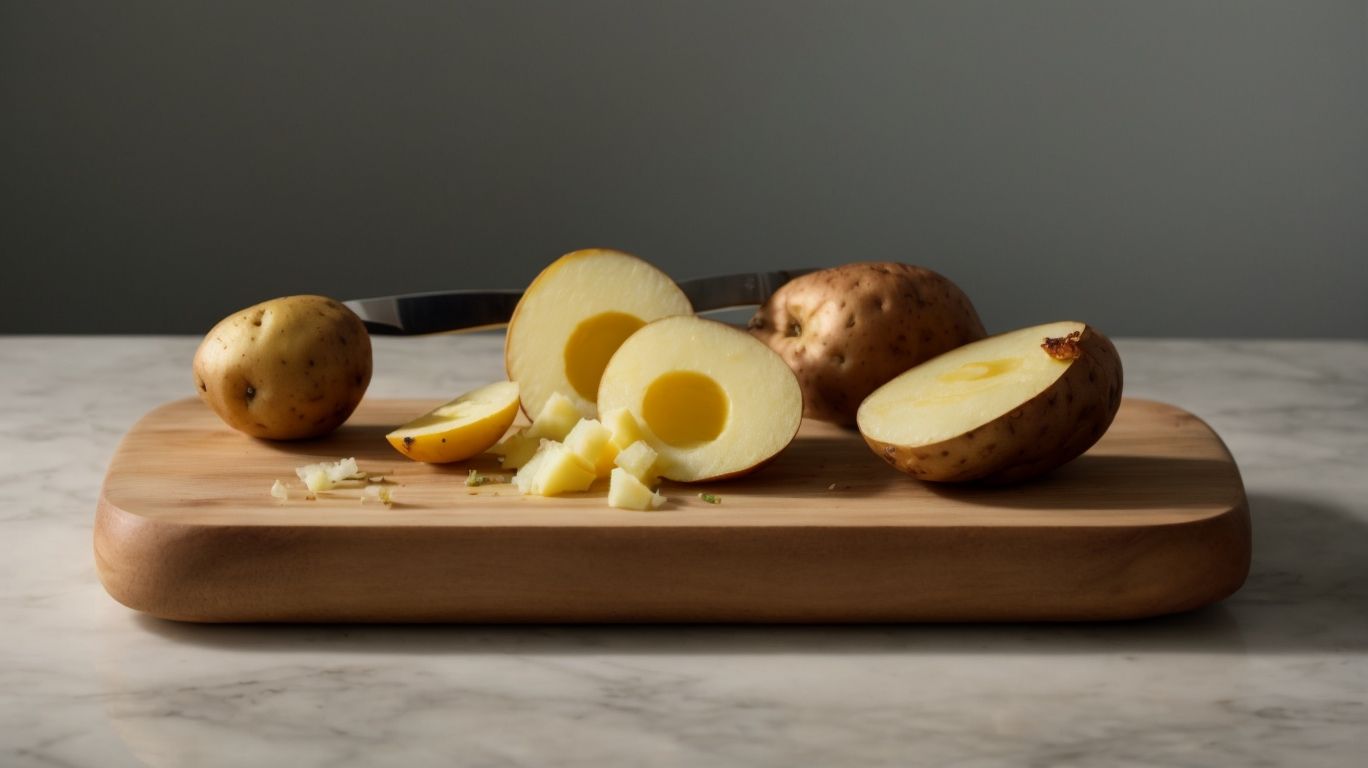
Credits: Poormet.Com – Alan Johnson
Cooking potato skins after peeling not only reduces food waste but also adds extra flavor and nutrients to your dishes.
When you cook crispy potato skins, they provide a delicious contrast in texture to your dish. The skins hold a concentrated amount of nutrients like fiber, potassium, and vitamins, making them a healthy addition.
Recipe variations with potato skins are endless – whether you bake them with olive oil and sea salt for a simple snack or sprinkle them with Parmesan and herbs for a gourmet touch.
Incorporating potato skins can enhance the overall flavor profile of your recipes. They add a depth of earthy taste and a subtle sweetness that complements various dishes. By including different ingredients when cooking with potato skins, you can create unique and flavorful combinations that elevate your meals.
Reduces Food Waste
Cooking potato skins after peeling helps minimize food waste by utilizing all parts of the vegetable, including essential nutrients and fiber found in Russet or Idaho potatoes.
By incorporating sea salt and a variety of seasonings such as garlic powder, paprika, or even parmesan cheese, you can enhance the flavor profile while boosting the nutritional value of the dish. The skins of different types of potatoes, like sweet potatoes or purple potatoes, not only contain vitamins like vitamin C and potassium but also offer a significant amount of dietary fiber. This fiber aids in digestion and helps regulate blood sugar levels, making it a healthy addition to your diet.
Adds Extra Flavor and Nutrients
Cooked potato skins offer a delightful crispy texture and provide additional nutrients and flavor to dishes, making them a versatile ingredient for enhancing recipes.
When seasoned with herbs and spices, potato skins add a depth of flavor to any dish. They make a perfect crispy and nutritious topping for salads or soups.
For a savory twist, potato skins can be stuffed with a mixture of fish fillets and vegetables before baking until golden brown. Another delightful way to utilize them is by frying them to a golden crispiness to serve as a tasty and crunchy snack. Paired with a drizzle of olive oil and a sprinkle of salt, potato skins can truly elevate the taste of various dishes.
What Are the Different Ways to Cook Potato Skins After Peeling?
There are multiple methods to cook potato skins after peeling, such as baking, frying, grilling, and microwaving, each offering unique textures and flavors.
- Baking potato skins involves a slower cooking process that results in a crisp outer layer and a soft interior, perfect for a healthier snack.
- Frying potato skins in oil yields a crunchy texture on the outside, making it a popular choice for those craving a more indulgent treat.
- Grilling potato skins imparts a smoky flavor and charred marks, elevating the taste profile with a touch of grill essence.
- Microwaving potato skins is a quick option that may not achieve the same crispiness as the other methods but is convenient for a speedy snack preparation.
Pair these delectable snacks with your favorite spices and condiments like mayonnaise and mustard for an added flavor boost.
Baking Potato Skins
Baking potato skins with a sprinkle of Vadouvan, olive oil, and a pinch of sea salt creates irresistibly crispy potato skins that are perfect for snacking.
The process starts by meticulously washing and scrubbing the potatoes to remove any dirt residue. After that, the potatoes are dried thoroughly before being rubbed with a generous amount of olive oil to ensure a crisp exterior.
Next, a blend of Vadouvan, a unique French-inspired spice mix, is gently sprinkled over the oiled potato skins, adding layers of aromatic flavors as they bake in the oven. The sea salt, with its subtle hint of brininess, enhances the overall taste profile.
Frying Potato Skins
Frying potato skins into crispy peel chips offers a delightful snack option with endless flavor variations that can complement dishes like fish fillets.
One of the key factors in achieving the perfect crispy potato skins is the preparation of the skins. After removing the potatoes’ flesh for another use, the skins should be thoroughly washed and dried to ensure they crisp up evenly in the oil.
Seasoning the skins before frying is another crucial step that allows for a variety of flavor profiles. Common seasonings include salt, paprika, garlic powder, and pepper.
Grilling Potato Skins
Grilling potato skins with a blend of spices and vegetables results in a crispy and flavorful dish, perfect for enhancing the taste of grilled meats or adding to salads.
When grilling potato skins, consider using a mix of spices like paprika, garlic powder, and mustard to elevate the flavors. The smokiness from the grilling process enhances the overall taste, creating a unique and satisfying experience. Adding vegetables such as bell peppers or onions not only adds a pop of color but also introduces a layer of sweetness to complement the savory notes of the dish.
Microwaving Potato Skins
Microwaving potato skins is a quick and easy method that requires minimal ingredients, making it a convenient way to prepare a snack or incorporate them into dishes like chickpea salads.
When preparing potato skins in the microwave, begin by scrubbing the potatoes thoroughly to remove any dirt or impurities from the skin. Ensuring that the skin is clean is crucial for a tasty result. After scrubbing, dry the potatoes with a paper towel. Next, carefully poke the skins with a fork to create small holes to allow steam to escape during microwaving. This simple step helps prevent the potatoes from bursting.
Once the potatoes are prepped, place them on a microwave-safe plate and cook them on high power for about 5-7 minutes, depending on the size of the potatoes. Remember to turn them over halfway through the cooking process for even heating.
What Ingredients Can You Use to Enhance the Flavor of Potato Skins?
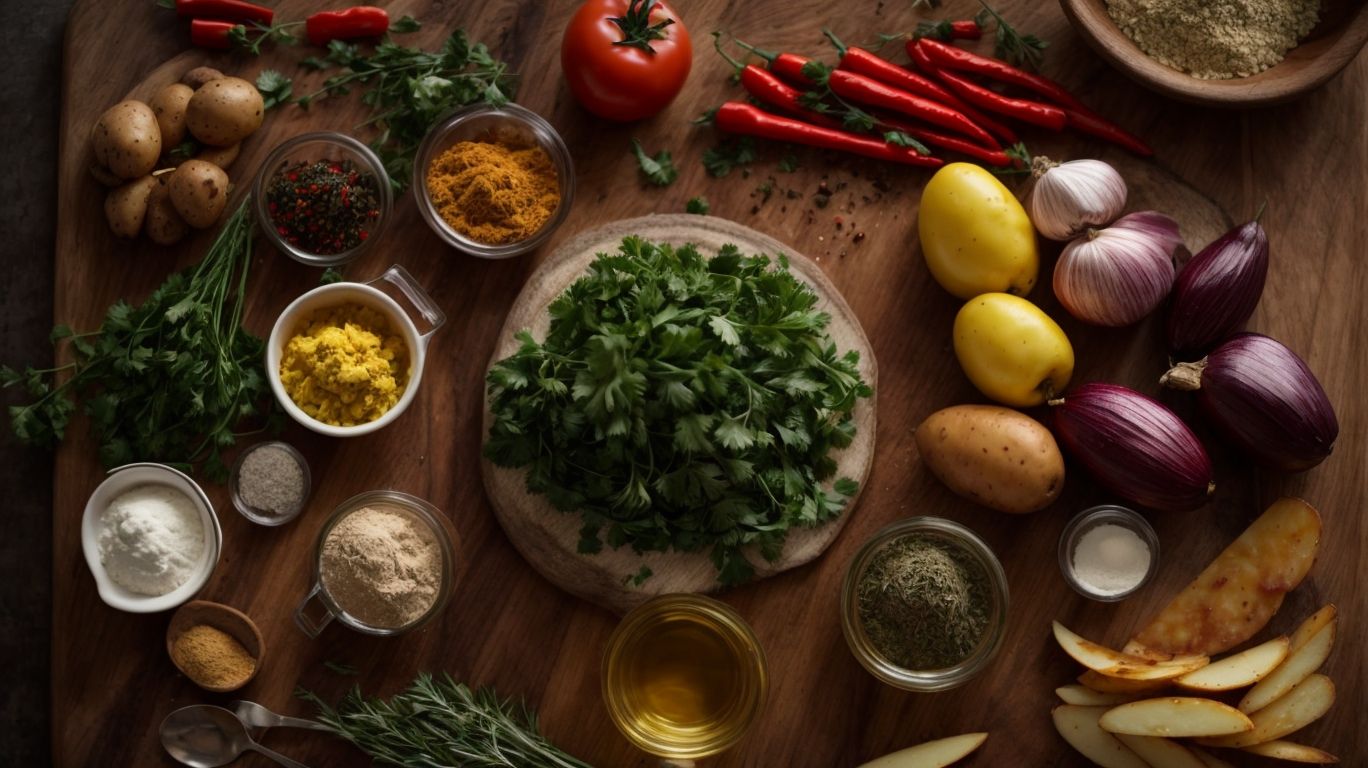
Credits: Poormet.Com – Logan Johnson
Enhancing the flavor of potato skins can be achieved through various ingredients like herbs, spices, cheese, bacon, and toppings like sour cream and chives.
Regarding enhancing the taste profile of potato skins, the addition of crispy bacon brings a savory and indulgent element. The saltiness and crunch of bacon complement the softness of the potato perfectly.
Additionally, melty cheese adds a rich and creamy texture that takes the dish to a whole new level. Another popular option is to use a dollop of tangy sour cream, which provides a cooling contrast to the warm, crispy skin.
Experimenting with different herbs and spices can elevate the flavor profile even further. From classic garlic and onion powder to smoked paprika or cayenne pepper for a kick, the variations are endless.
Herbs and Spices
Herbs and spices offer a creative way to enhance the flavor of potato skins, allowing for diverse variations that cater to different taste preferences.
Experimenting with the seasoning for potato skins can take the dish from good to exceptional. A classic combination is salt and pepper for a simple yet delicious flavor. For those looking to add a kick, paprika or chili powder can be sprinkled on the skins before baking for a spicy twist. If you prefer an herby aroma, a mix of rosemary and thyme can bring a fragrant and earthy taste to the crispy outer layer. Combining garlic powder and onion powder can also result in a more savory profile for your potato skin recipe.
Cheese
Adding melted cheese to crispy potato skins creates a savory and indulgent dish that can be customized with various spices and seasonings for added flavor.
Cheddar or mozzarella cheese can be generously sprinkled over the warm potato skins, and then broiled until bubbly and golden brown. For a kick of heat, you can mix in some diced jalapenos or red pepper flakes before adding the cheese. Alternatively, a sprinkle of smoked paprika or cayenne can add a smoky or spicy note to the dish. Experimenting with different cheeses like Gruyere or Parmesan can elevate the flavor profile, offering a gourmet twist to this classic appetizer.
Bacon
Crispy bacon crumbles sprinkled over potato skins offer a salty and savory combination that elevates the dish to a delicious treat, perfect for snacking or as a side dish.
The secret lies in how the bacon adds a delightful crunch to each bite, contrasting with the softness of the potato skin underneath. This contrast in textures creates a mouthwatering sensation that keeps you coming back for more. The saltiness of the bacon enhances the overall flavor profile of the potato skins, making them a crowd-pleaser at any gathering or party. When incorporating bacon into a potato skin recipe, it amplifies the dish’s richness, making it a standout option that will impress even the most discerning palates.
Sour Cream and Chives
Pairing crispy potato skins with tangy sour cream and fresh chives creates a delightful combination of flavors, making it a versatile dish that complements various meal options.
Adding a dollop of rich sour cream to the warm potato skin enhances its creaminess and adds a contrasting tanginess that balances the overall taste. The chives, with their mild onion flavor, bring a refreshing touch to each bite, elevating the dish with a burst of freshness. This classic combination of ingredients is not only delicious but also simple, requiring minimal effort to prepare.
Whether as an appetizer, side dish, or even a main course, the sour cream and chives potato skins offer a versatile canvas for diverse flavor pairings. The recipe can be customized to suit different preferences, such as adding bacon, cheese, or even vegetarian options like diced tomatoes or avocado. The beauty of this dish lies in its adaptability, allowing for endless variations to suit any occasion.
Tips for Cooking Perfect Potato Skins
To achieve perfect potato skins, ensure you clean and dry them properly, use high heat for crispiness, avoid overcrowding the pan or grill, and experiment with different toppings and cooking methods.
One easy way to ensure potato skins turn out crispy is to bake them at a high temperature, around 400-425°F, to get that perfect crunch. Cleanliness is key to removing excess moisture that can prevent the skins from crisping up.
For variety, try topping your skins with a mix of cheese, bacon bits, green onions, and sour cream for a classic loaded potato skin flavor. Experiment by air frying or grilling the skins to discover new textures and flavors.
Remember, the secret to great potato skins lies in the details and the right balance of heat and creativity!
Properly Clean and Dry the Potato Skins
Thoroughly cleaning and drying potato skins before cooking is essential to ensure they turn out crispy and absorb flavors effectively when exposed to high heat.
When you clean potatoes, you remove any dirt and pesticides that might be lingering on the skin. By drying them properly, you prevent excess moisture from interfering with the cooking process. Moisture on the skin can lead to steaming rather than crisping in the oven or frying pan.
Properly dried potato skins allow for better contact with oil or seasonings, resulting in a more evenly browned and flavorful outcome. When the skins are clean and dry, they develop a delicious crunchy texture that contrasts beautifully with the soft interior.
Use High Heat for Crispy Skins
Cooking potato skins at high heat not only ensures a crispy texture but also allows them to be a perfect canvas for various toppings that add flavor and visual appeal.
When you cook potato skins at high heat, you’re essentially creating a contrast between the crunchy exterior and the soft interior. This dynamic texture is key to those satisfying bites that everyone loves. The high temperature not only crisps up the skins but also helps lock in the natural potato flavor, making it a delectable base for all sorts of toppings.
Whether you opt for classic toppings like cheese and bacon or experiment with fresh herbs and spicy sauces, the crispy skins provide a delightful crunch alongside the burst of flavors from the added toppings. Your taste buds will thank you for taking your potato skins to new heights by exploring different flavor combinations that complement the toppings and make each bite a culinary delight.
So, next time you’re in the mood for a savory snack or appetizer, don’t forget the magic that high heat can bring to your potato skin creations!
Don’t Overcrowd the Pan or Grill
Avoid overcrowding the pan or grill when cooking potato skins to ensure they crisp up evenly and allow room for experimentation with different ingredients and flavors.
When the skin-to-surface contact is overcrowded, the potato skins can steam rather than becoming beautifully crispy. This crucial step impacts not just the texture but also the overall flavor profile of the dish.
To achieve that sought-after crunch, space out the skins on the pan or grill, giving them ample room to breathe and develop their unique textures. This method also provides a canvas for experimenting with various toppings and seasonings to create exciting, personalized flavor combinations.
Experiment with Different Toppings and Cooking Methods
Dare to experiment with a variety of toppings and cooking methods for potato skins to discover unique variations that can complement dishes like fish fillets or serve as standalone snacks.
Get creative with toppings such as classic cheddar cheese, sour cream, and crispy bacon for a traditional flavor palette. For a modern twist, try combinations like smoked salmon with dill cream, avocado and sriracha, or even buffalo chicken with blue cheese dressing.
Regarding cooking techniques, consider baking the potato skins for a healthier alternative or frying them for an extra indulgent crunch. Choose between scooping out the insides entirely for a lighter option or leaving a bit of potato flesh for added texture.
Frequently Asked Questions
How to Cook Potato Skins After Peeling?
1. Can you cook potato skins after peeling them?
Yes, potato skins can be cooked after peeling. In fact, they can be used in a variety of dishes and are a great way to reduce food waste.
What are some ways to cook potato skins after peeling?
2. Are there any creative ways to use potato skins after peeling?
Absolutely! You can fry them, bake them, or even use them as a topping for loaded potato skins.
How do you prepare potato skins for cooking after peeling?
3. What is the best way to prepare potato skins for cooking after peeling?
The best way to prepare potato skins for cooking after peeling is to wash them thoroughly, dry them, and then season with your desired ingredients.
Can you eat the potato skins after cooking?
4. Can the cooked potato skins be eaten?
Yes, the cooked potato skins can be eaten and are often the most flavorful part of the potato.
How do you store potato skins after peeling for later use?
5. Can you save peeled potato skins for later use?
Yes, you can store peeled potato skins in an airtight container in the fridge for up to 3 days before using them in a recipe.
What are the benefits of using potato skins in cooking?
6. Are there any health benefits to using potato skins in cooking?
Yes, potato skins are a good source of fiber, vitamins, and minerals. They also add a delicious crunch and flavor to dishes.

